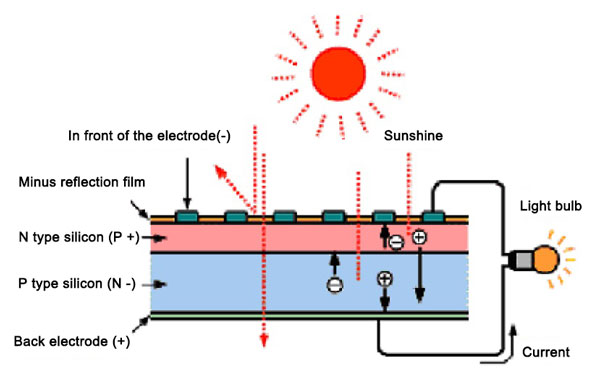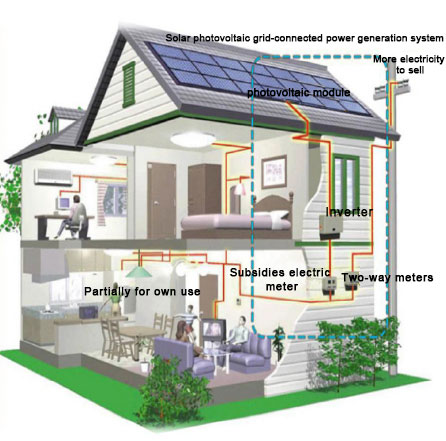What is photovoltaic power generation?
Photovoltaic power generation is the use of solar photovoltaic cells to convert solar radiation energy directly into electricity. Photovoltaic power generation is the mainstream of solar power generation today.
Distributed photovoltaic systems are photovoltaic power generation facilities that are built near the customer's site, generally connected to a power grid with a voltage level lower than 35kV and below, with the power generated mainly for local consumption and balanced regulation in the distribution system as a characteristic. The operation mode of distributed photovoltaic systems is self-generation, residual power online, and full online in two ways. Self-generation, surplus power online means that the power generated by distributed photovoltaic power generation system is used by power users first, and the excess power is connected to the grid; full online means that all the power generated by distributed photovoltaic power generation system is connected to the grid.
Distributed power generation follows the principles of localization, clean and efficient, decentralized layout and nearby utilization, making full use of local solar energy resources to replace and reduce fossil energy consumption.
What is a household-distributed photovoltaic system?
Household distributed photovoltaic system refers to the use of natural persons within the scope of the home base of buildings, such as their own homes, as well as the construction of an appurtenant distributed photovoltaic system. Household-distributed photovoltaic system usually has a small installation capacity, low voltage level grid connection, filing, and grid connection process is simplified.
How do photovoltaic cells generate electricity?

A photovoltaic cell is a semiconductor device with light-electricity conversion characteristics, which directly converts solar radiation energy into direct current electricity, is the most basic unit of photovoltaic power generation. The unique electrical properties of photovoltaic cells are achieved by doping certain elements (e.g., phosphorus or boron, etc.) in crystalline silicon, thus causing a permanent imbalance in the molecular charge of the material and forming a semiconductor material with special electrical properties. When exposed to sunlight, a semiconductor with special electrical properties can generate free charges, which move in a directional manner and accumulate, thus creating an electric potential at its two ends and generating an electric current when the two ends are closed with a conductor. This phenomenon is known as the "photovoltaic effect", or "PV effect" for short.
What are the components of a distributed photovoltaic system?

A distributed PV system consists of a PV array (PV array consists of PV modules connected in series and parallel), a PV inverter, a PV rack, a PV grid-connected box, a controller (optional), a battery bank (optional), and an AC/DC cable.
The core component of the PV power generation system is the PV module, which in turn is made of PV cells in series, parallel, and packaged, and it converts the light energy of the sun directly into electricity.
The electricity produced by PV modules is direct current, which can be converted into alternating current by inverters and then used, or all of it can be delivered to the public grid. From another point of view, the electricity generated by the PV power generation system can be used immediately, or the electricity can be stored in storage devices such as batteries and released for use at any time as needed.
